bray (breI), sb.3 Her. Also brey. [a. OFr. braie, braye, *breie, now broie.]
- A semicircular figure representing a barnacle or bit to restrain a restive
horse.
1863 C. Boutell Man. Her. 45 Breys, barnacles for a horse's nose, used in breaking the animal. 1864 C. Boutell Her. Hist. & Pop. (ed. 3) xv. 175 Three breys or barnacles in pale or. - (Corresponding to Fr.) A tool used for breaking hemp, used as a bearing.
1882 Cussans Handbk. Her. 109 A Hemp-brey is really the same instrument as a Horse-brey, except that they were used for different purposes, and that the former is in Armory always represented as being upon a wooden stand.
- A kind of powerful bit or twitch for the mouth of horse or ass, used to
restrain a restive animal; later, spec. an instrument consisting of two
branches joined by a hinge, placed on the nose of a horse, if he has to be
coerced into quietness when being shoed or surgically operated upon.
A[C. 1200 Neckam De Utensilibus in Wright Voc. 100 Camum (bernac) vel capistrum (chevestre) sponte pretereo. ] C. 1440 Promp. Parv. 33 Bernak for horse [1499 bernakill], chamus. 1468 Medulla Gram. in Cath. Angl. 22 Chamus , a bernag for a hors. A. 1500 in Wülcker Voc./572 Chamus, a bernake. ß1382 Wyclif Prov. xxvi. 3 A scourge to an hors, and a bernacle to an asse. 1387 Trevisa Higden Rolls Ser. I. 353 Þey dryueþ hir hors wiþ a chambre 3erde [virgam cameratam] in þe ouer ende in stede of barnacles. 1483 Cath. Angl. 22/1 Barnakylle, Byrnacle, Barnakalle, camus . 1562 Leigh Armorie (1597) 104 Barnacle..is the chiefest instrument that the smith hath, to make the vntamed horsse gentile. 1607 Topsell Four-f. Beasts 251 Barnacles..put upon the Horses nose, to restrain his tenacious fury from biting, and kicking. 1774 Goldsm. Nat. Hist. i. i. (1862) I. 245 note The horse..being caught by the nose in barnacles. 1831 Youatt Horse xxii. (1872) 457 The barnacles are the handles of the pincers placed over and enclosing the muzzle. - An instrument of torture applied in a similar way. Also fig.
[1382 Wyclif 2 Kings xix. 28, I schal putten a cercle in thyn noos thrillis and a bernacle [Coverdale, brydle bitt; 1611 bridle] in thi lippis. ] 1625 tr. Gonsalvio's Sp. Inquis. 145 Clapped a Barnacle vpon his tongue, which remained there vntill the fire had consumed it. 1679 Hist. Jetzer Pref., Magistrates may flatter themselves, that with the Barnacles of a strict and well-worded Oath they can hold a Jesuites Nose to the Grind-stone. 1870 Edg ar Runnymede 109 To save my body from the bernicles.
- Simon de Genville noir od treis breys d'or al chief d'argent od un demi leon de gules.
- Geffrey de Genville d'azur od trois breys d'or od un chief d'ermyne et un demi lion de gules.
- Geffrey Genevile, d'azure al cheif d'ermine un leon recoupé de gulez, en le azure trois bresses d'or.
- [...] od treis bayes [...].
- Mesire Jehan de Genville porte les armes d'asur au chief d'ermine a un demi lion de gheules et couronne d'or au chief et a trois broies d'or sur l'azur.
- [azure 3 broyes or, on a chief argent a lion issuant gules]
- [sable 3 broyes or, on a chief ermine a lion issuant gules]
- [azure 3 broyes argent, on a chief argent a lion issuant gules]
- [azure 3 broyes argent, on a chief ermine a lion issuant gules crowned or]
- kukulthei': [sable 1 broye argent liée de gueules, posée en bande, fermée]
Glover's roll, Cooke's version, (c.1253), no 102.
Glover's roll, Cooke's version, (c.1253), no 103. See also Wijnbergen 844
Walford's roll version I (c.1275), no.106. (other contemporary versions of the roll spell the charge "bresser", "bresers").
Camden Roll (c.1280), no 156.
Chifflet-Prinet roll (composed 1297), no 40. Also Gelre (c1350) 379, Bellenville (c.1390; ed. L. Jéquier, Cahiers d'héraldique V) 2r20, Bergshammar Vapenboken (ed. J. Raneke, 1975) 1841, Demay, Inventaire des sceaux de la Collection Clairambaut 4935-9
Wijnbergen 845
Wijnbergen 534, 846
Armorial Navarre (ed. Douët d'Arcq, 1859) 693
Armorial Navarre (ed. Douët d'Arcq, 1859) 694
Kückelsheim: Gelre 1604, Bellenville 50v19. See also: Bergshammar Vapenboken (late 15th c.) 493, Westfälischen Siegel des Mittelalters 185, M. von Spiessen: Wappenbuch des westfälischen Adels (1901-3). 82
References
- Vaivre, Jean-Bernard de: 'Les armes de Joinville.' in Guerre, pouvoir et noblesse au Moyen Age: Mélanges en l'honneur de Philippe Contamine. Ed. Jacques Paviot and Jacques Verger (Cultures et civilisations médiévales, 22). Paris: Presses de l'Université de Paris-Sorbonne.
Illustrations
13th century
Wijnbergen roll (c.1280; in Cahiers d'Héraldique II 1975).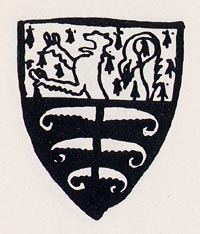
illustration for n.53
14th century
Gelre roll (c.1350; in Cahiers d'Héraldique II 1975).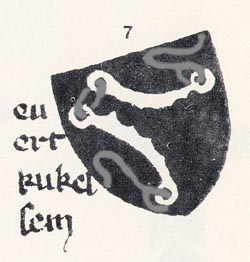
illustration for n. 1604
Bellenville roll, c.1390 (in Cahiers d'héraldique V, 1983):

Arms of Joinville (geenvile, genvile) 2r21 |
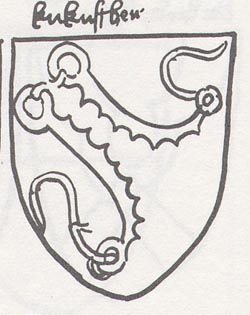
Arms of Kückelsheim (kukulthei') 50v19 |
15th century
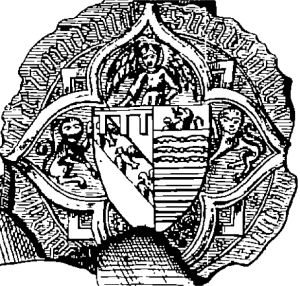
Seal of Féry de Lorraine, comte de Vaudémont and his wife Marguerite de Joinville, from Mémoires de la Société d'archéologie lorraine (1881, p. 86).
17th century
From John Gibbon: Introductio ad Latinam Blasoniam (1682)

p. 1, s.v. barnacle ("an instrument used by farriers to curb
and command an unruly horse")
From Menestrier: Méthode raisonnée du blason (1761 ed., but illustration is earlier)

18th century
Both pictures come from the plates to Diderot's Encyclopédie.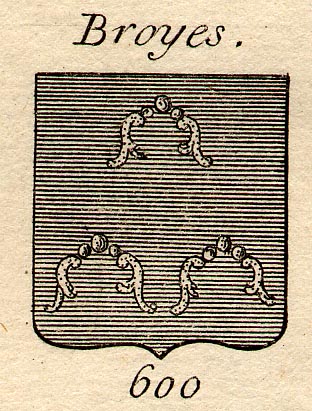
Joinville: d'azur à trois broyes d'or, liées d'argent, mal ordonnées. |
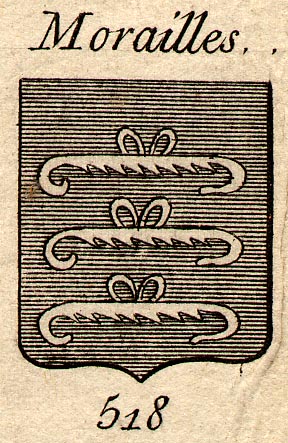
Moreilles: d'azur à trois morailles d'argent, posées en fasce l'une sur l'autre. |
19th century
From Dictionnaire Encyclopédique Larousse (1898):
s.v. broye
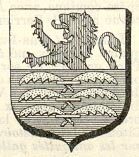
s.v. Joinville
From Rietstap's Armorial Général (2d ed., 1884)

s.v. broyes
From Parker's Glossary (1894):
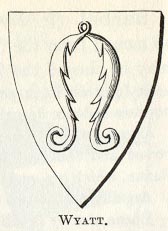 |
 |
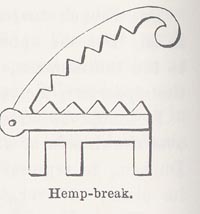
s.v. hemp-break
20th century
Boutell's Heraldry (1950 ed. by C.W. Scott-Giles, but probably taken from the 19th c. editions):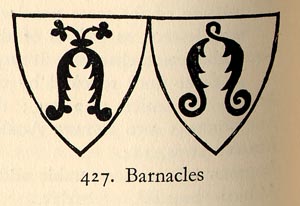
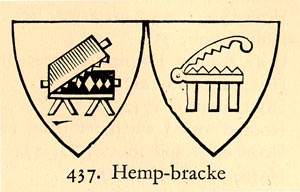
Illustration drawn by C. W. Scott-Giles for Brault's Early Blazon
(1972, 2d ed. 1997):
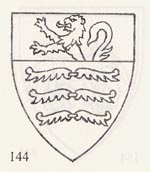
It is not clear what the source of the illustration is.